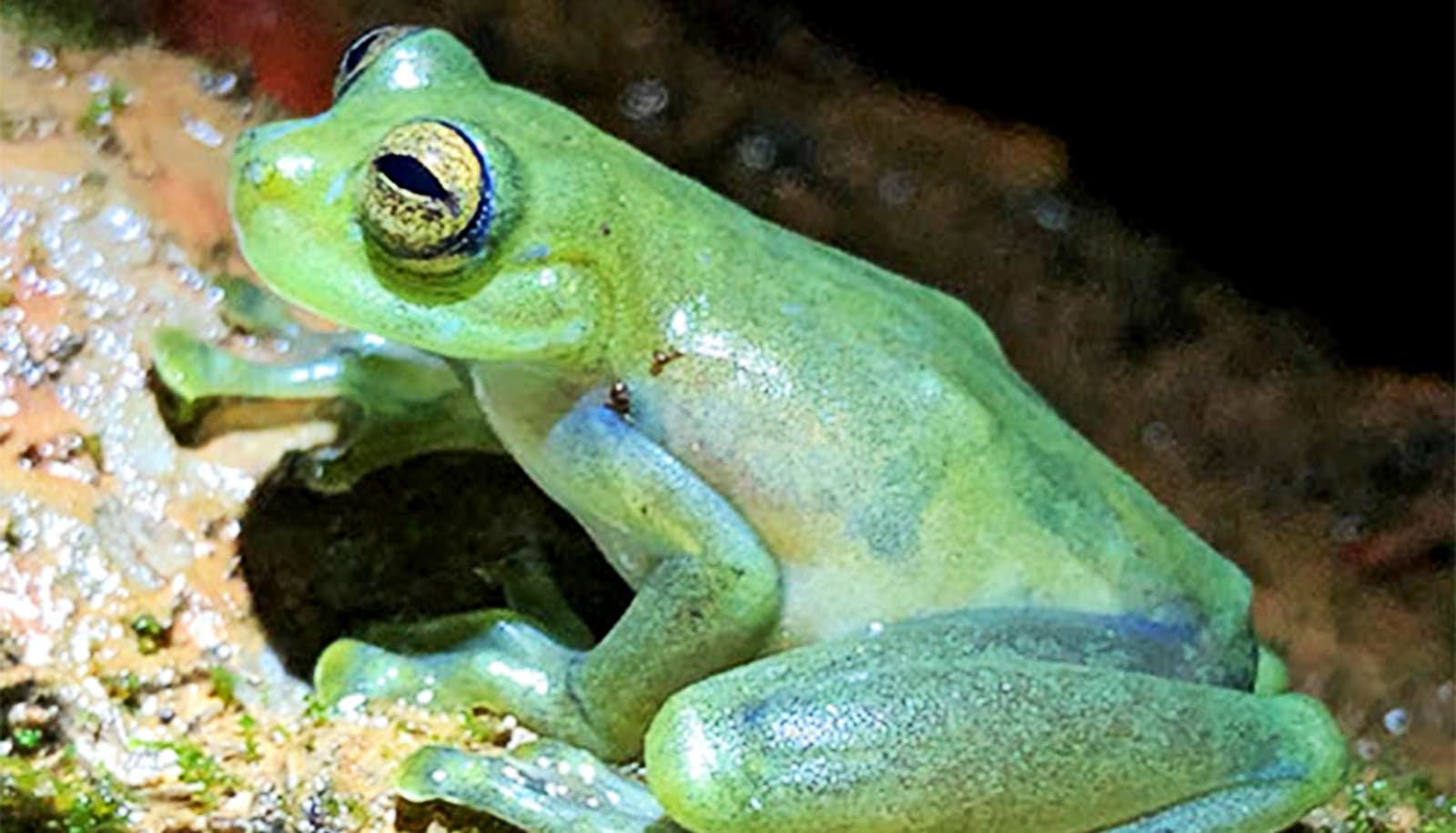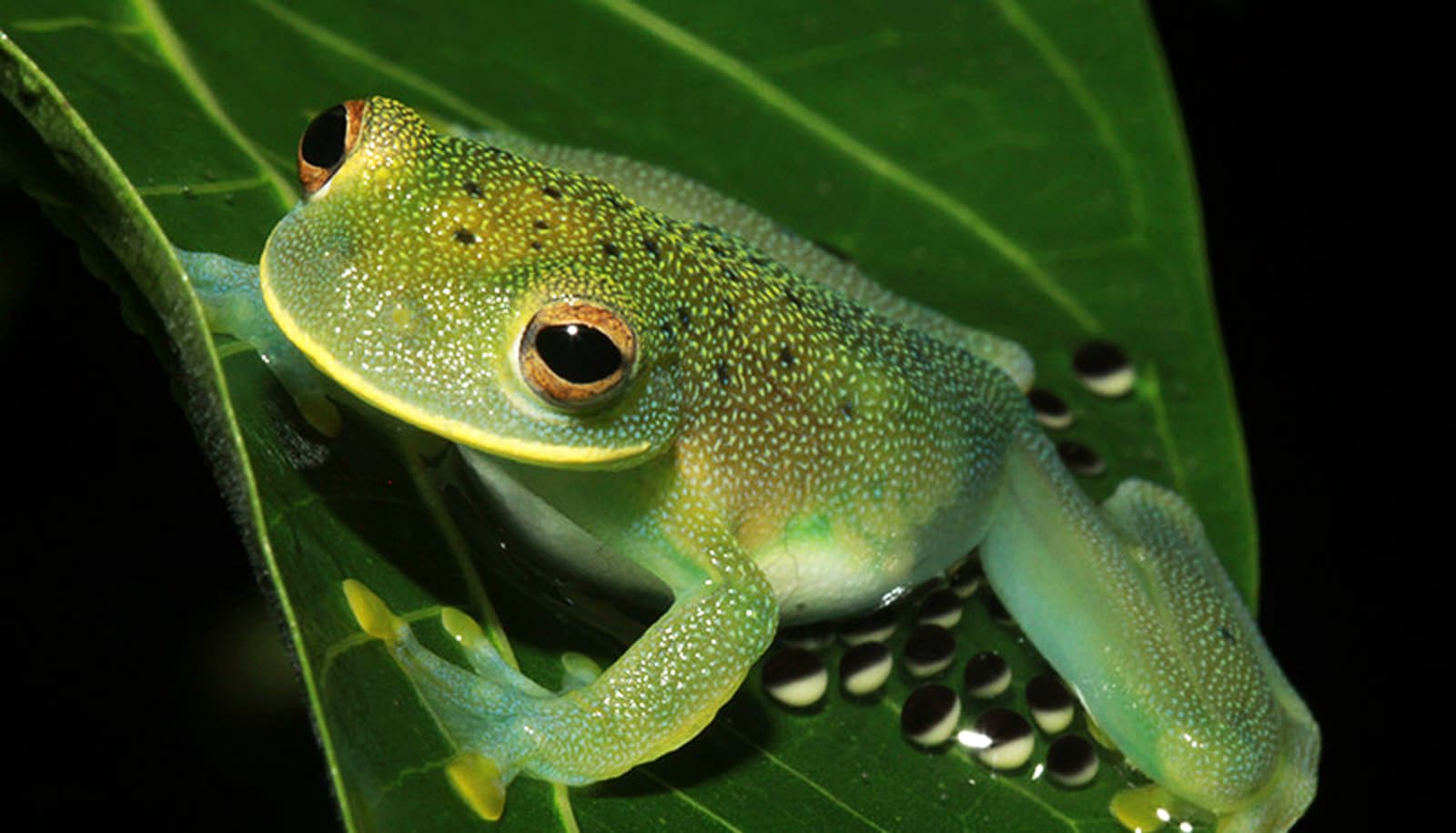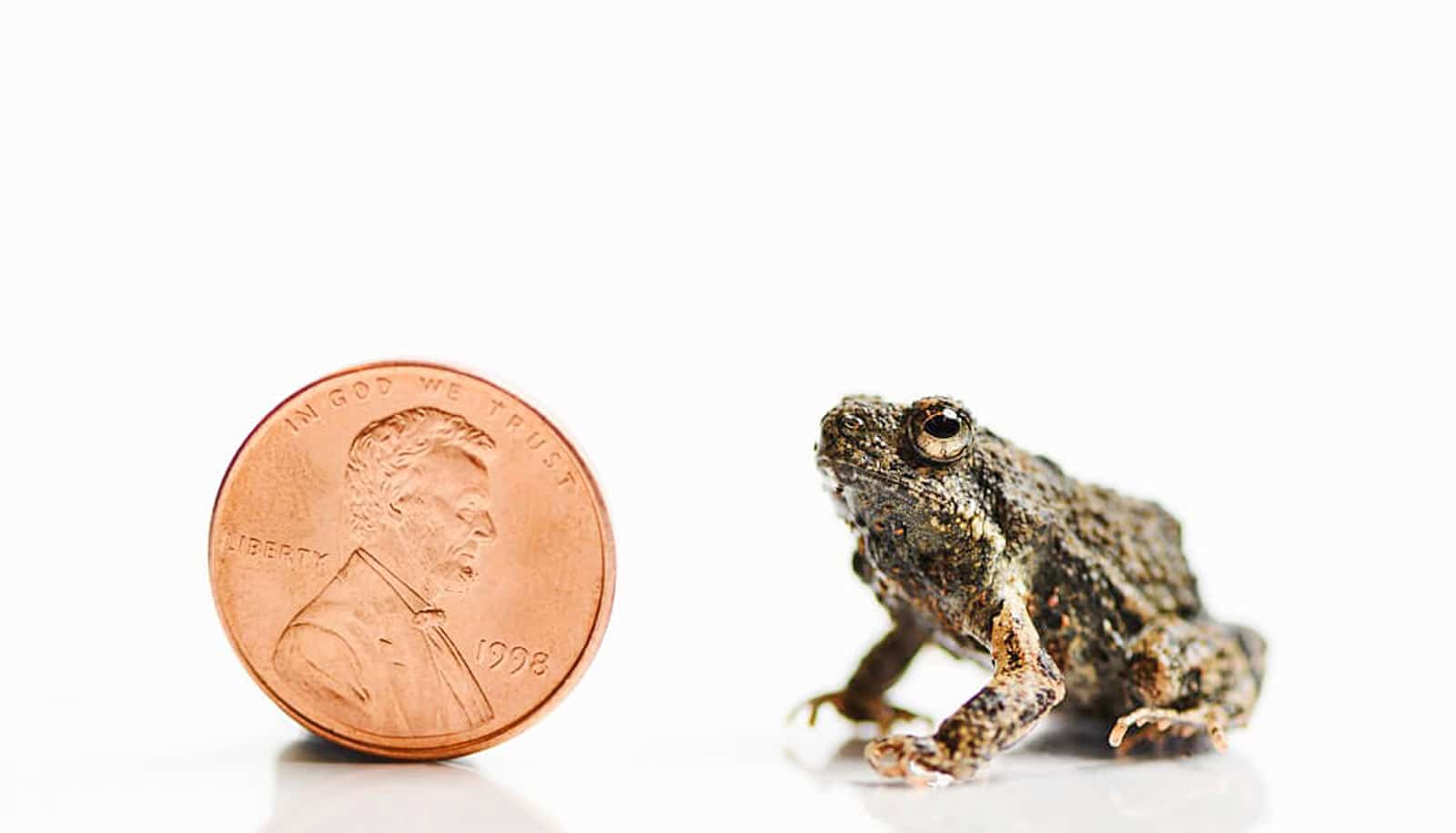Glass frogs that live near loud streams add to mating calls with the flap of a hand, a wave of a foot, or a bob of the head to attract a mate, a new study shows.
Researchers have documented these frogs that “dance” near rushing streams—where noise can obscure those crucial love songs—in the rainforests of India, Borneo, Brazil, and, now, Ecuador.
Conservation ecologist Rebecca Brunner, a PhD candidate at the University of California, Berkeley, discovered that the glass frog Sachatamia orejuela can join the list of species that make use of visual cues in response to their acoustic environments. This is the first time researchers have observed a member of the glass frog family (Centrolenidae) using visual communication in this manner.
“…it’s a perfect example of how an environment’s soundscape can influence the species that live there.”
“A handful of other frog species around the world use visual signaling, in addition to high-pitched calls, to communicate in really loud environments,” Brunner says. “What’s interesting is that these species are not closely related to each other, which means that these behaviors likely evolved independently, but in response to similar environment—a concept called convergent evolution.”
Sachatamia orejuela glass frogs, native to the rainforests of Ecuador and Colombia, are almost exclusively found on rocks and boulders within the spray zones of waterfalls, where rushing water and slippery surfaces offer some protection against predators, and their green-gray color and semi-transparent skin make them nearly impossible to spot. As a result, little is known about this species’ mating and breeding behavior.
Brunner, who studies the bioacoustics of different ecological environments, was chest-deep in an Ecuadorean rainforest stream recording the call of a Sachatamia orejuela when she first observed this visual signaling behavior. As soon as she saw the frog repeatedly raising its front and back legs, she climbed a slippery rock face and balanced on one foot to get video footage of the behavior.
“I was already over the moon because I had finally found a calling male after months of searching. Before our publication, there was no official record of this species’ call, and basic information like that is really important for conservation,” Brunner says. “But then I saw it start doing these little waves, and I knew that I was observing something even more special.”
While she filmed, the frog continued to wave its hands and feet and bob its head. She also observed another male Sachatamia orejuela glass frog a few meters away performing the same actions.
“This is a really exhilarating discovery because it’s a perfect example of how an environment’s soundscape can influence the species that live there. We’ve found that Sachatamia orejuela has an extremely high-pitched call, which helps it communicate above the lower-pitched white noise of waterfalls.
“And then to discover that it also waves its hands and feet to increase its chances of being noticed—and that’s a behavior I’ve always loved reading about in textbooks, so it is beyond thrilling to be able to share another amazing example with the world,” Brunner says.
Though the COVID-19 pandemic has put a pause on Brunner’s fieldwork, she hopes to return to Ecuador soon to continue her research, which links bioacoustics and conservation.
“One of the best things about fieldwork is that nature is always full of surprises—you never know what discoveries you may happen upon,” Brunner says. “I hope our findings can serve as a reminder that we share this planet with incredible biodiversity. Conserving ecosystems that support species like Sachatamia orejuela is important not only for our well-being, but also for our sense of wonder.”
Additional researchers from Universidad San Francisco de Quito contributed to the study, which appears in the journal Behaviour. A National Geographic Explorer Grant and a National Science Foundation Graduate Research Fellowship funded Brunner’s work.
Source: UC Berkeley


